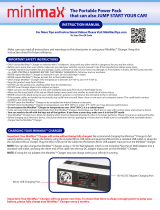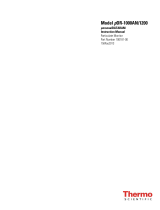
-2- E N V I R O N
• Air Sampling Protocol document – The Air Sampling Protocol provides detailed
procedures for conducting theater- and production-specific monitoring. Monitoring
conducted in accordance with the Air Sampling Protocol can be used to evaluate
potential exposures to short-term concentrations of smoke and haze special effects for
theatrical productions where the Equipment-Based Guidelines are not applicable.
This includes productions that use smoke/haze equipment or fluids other than those
for which Equipment-Based Guidelines have been provided in this document, or
productions that use equipment or fluids that are included in these Equipment-Based
Guidelines, but under conditions other than those utilized in developing the
Guidelines.
The sampling procedures used to develop these Equipment-Based Guidelines are based
on the ENVIRON Air Sampling Protocol.
B. Use of Equipment-Based Guidelines
In the absence of other information, theater-specific monitoring would be required to
determine whether smoke/haze machines are being used in a production in a manner that avoids
peak exposures to Actors. The Equipment-Based Guidelines described in this report were
developed as an alternative to conducting theater- and production-specific monitoring. These
Guidelines were developed under conservative use assumptions (e.g., no ventilation, no on-stage
activities or props that would enhance dispersion, cue release at breathing height level). By
following these Guidelines, a production can use smoke and haze effects without having to
conduct its own stage-specific testing, provided the machines are used in accordance with
manufacturer specifications, are well maintained, and are functioning properly. Tables 3 and 4
of this report describe the distance (with respect to the discharge point on the equipment) and
length of time that concentrations exceeding the peak guidance levels would occur for various
use patterns. Thus, by arranging the blocking and choreography such that an Actor is not
situated within the restricted areas during the times specified in Tables 3 and 4, Actors should
not receive peak exposures.
It should be noted that these Equipment-Based Guidelines may not be appropriate for all
productions. Tables 3 and 4 are based on smoke and haze machines positioned between four and
five feet above the ground, and being operated to achieve 10 to 15 seconds of continuous smoke
generation or 40 seconds of continuous haze generation. Productions may want to use different
configurations for positioning the machines (e.g., different heights), provide on-stage ventilation,
or generate smoke and haze for a longer period of time. In addition, many productions may have
other stage-specific conditions (e.g., on-stage activities and props that enhance dispersion) that
would allow Actors to be present in areas that are restricted under these Guidelines but which, in
fact, do not exceed the guidance levels. In those cases, production-specific monitoring would be
recommended to determine whether peak exposure may occur. For the smoke and haze fluids
included in this testing (see Table 1), the calibration factors summarized in Table 2 can be used,
and the calibration step of the ENVIRON Air Sampling Protocol can be bypassed. This will
significantly reduce the amount of time and expense required to conduct monitoring. For fluids
other than those included in this testing, appropriate calibration factors would need to be
developed in accordance with the Air Sampling Protocol.


























